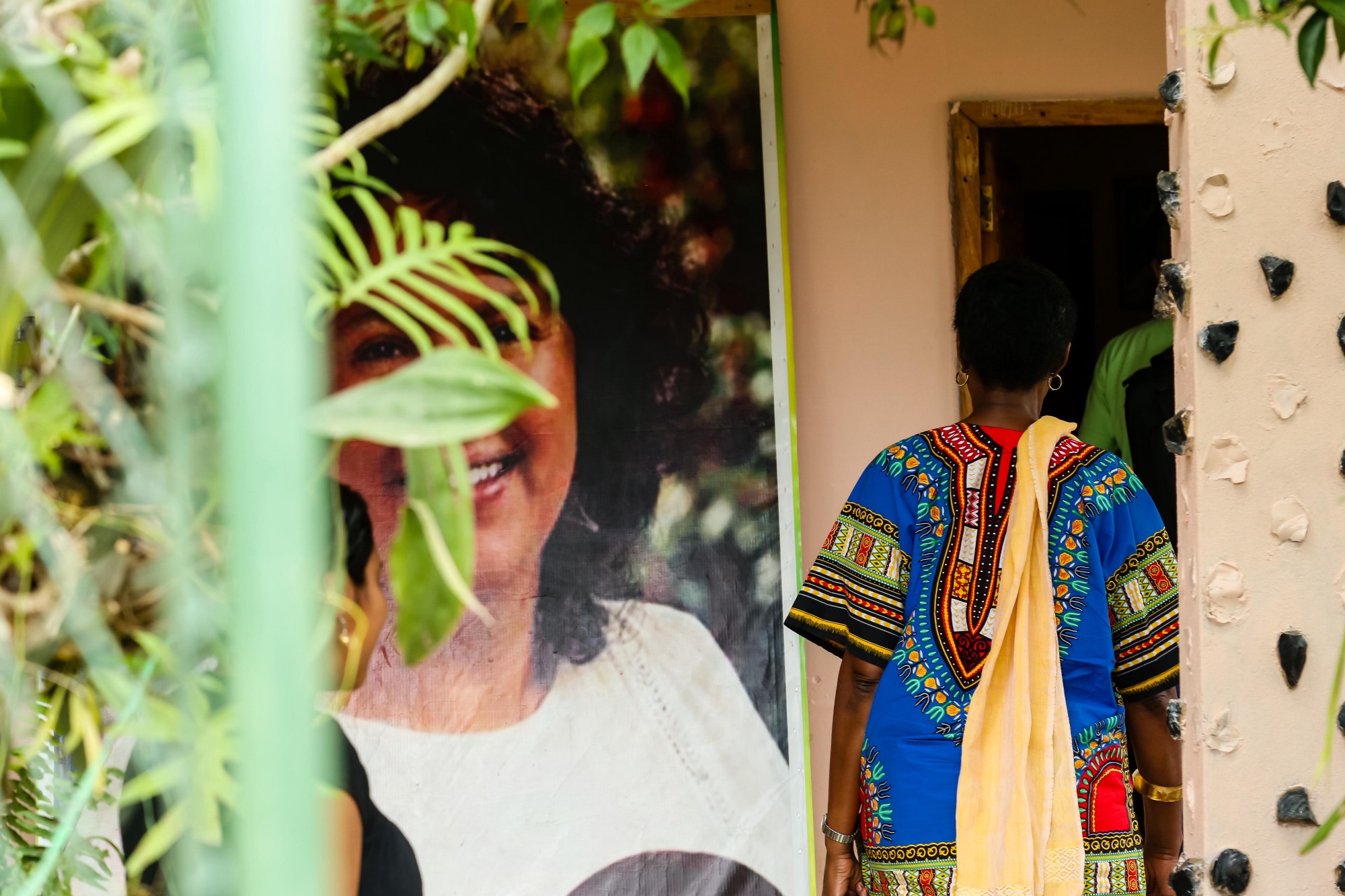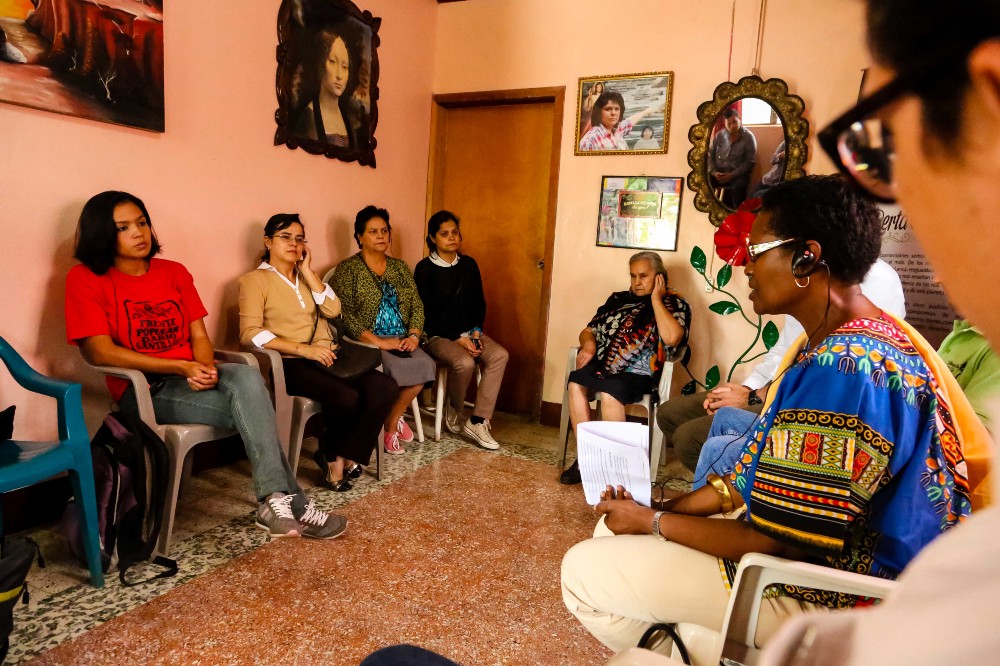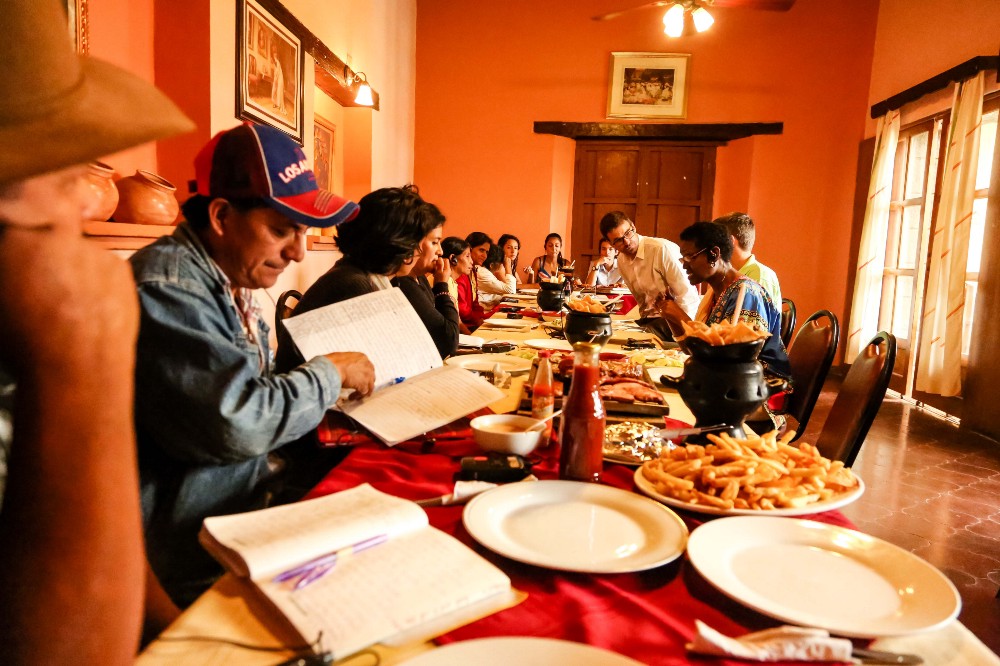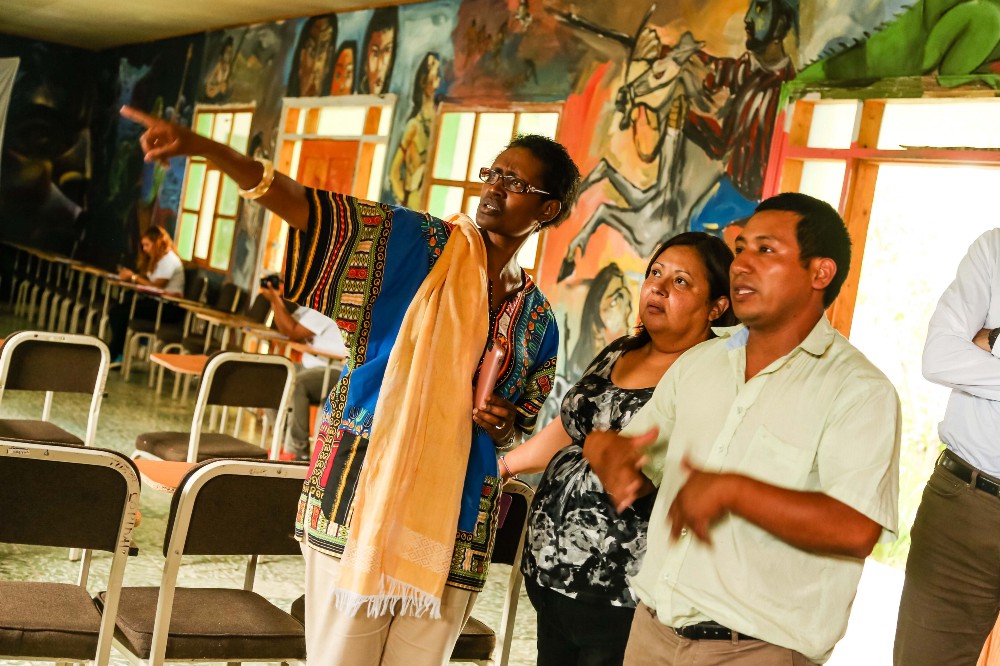What I learned during my visit to La Esperanza, Honduras

The two-lane road to La Esperanza winds up and down several lush, cloud-topped mountains, with beautiful views of the valleys below. After about an hour, the road begins descending into one of those valleys, where the town of La Esperanza sits. As we drove through town, we passed markets full of colorful fruit; pineapples, bananas, and papayas sat stacked high on wooden tables. It is in this lovely town that Berta Caceres was shot dead four months ago.

I came to La Esperanza to meet with her family and her fellow human rights defenders. I came to show that all of Oxfam was shocked and saddened by her murder and that we stood alongside them in solidarity, but most importantly, I came to hear their voices, experiences, and stories first-hand.
Berta’s family welcomed my colleagues and me into their home, where they kindly offered strawberry juice and sweet pastries. We sat around in a circle, surrounded by photos and banners bearing Berta’s likeness, and heard from her mother, her brother, her daughters, and others. The Goldman Prize which she’d won last year sat on a small table, near a picture of her speaking at the award ceremony.

Her family spoke with pride about their mother’s work and legacy. Berta co-founded and led COPINH, an organization of Indigenous rights defenders, and led the opposition against the construction of a dam that could evict communities and destroy land sacred to her Lenca people. The developers began construction without ever consulting with the Lenca community, in violation of international agreements. It should never have been approved, and so it must be immediately cancelled, her family says.
Berta’s oldest daughter, Olivia, said that Berta’s fight wasn’t just about the Lenca in Honduras — defenders standing up for the rights of Indigenous groups, women, and minorities face the same risks all over the world. Dams and other development projects like the one Berta fought are “projects of death,” Oliva said, because they destroy lives and communities. Any project must begin with the free, prior, and informed consent of the people who might be affected.
Their sadness and sorrow was heavy as well. Berta’s brother, Gustavo asked, “When will the killings end?” This was not the first time their community had been threatened. Five other COPINH activists have been killed in the past, and later in the evening, we heard another activist, Lesbia Yaneth Urquia, had been murdered in northern Honduras that day. Berta’s mother, Austra Berta, her voice breaking with emotion, told me, “My tears are my plea to end the impunity in my country.”

The Honduran government passed a law last year meant to protect human rights defenders, journalists, and other activists, but from what I heard, the law hasn’t been properly implemented. Berta’s family don’t want any other family to go through the loss and sadness they have experienced; it is important to them that this law be strongly enforced.
Justice in the case of Berta’s murder would also go a long way towards ending the culture of impunity. Honduran authorities have made several arrests in connection with her murder, but given the pitiful conviction rate in the country, they are understandably mistrustful. Therefore, they insist that the Inter-American Commission on Human Rights launches an independent investigation.
While no arrests have been made regarding the “intellectual authors” of Berta’s murder, authorities insist their investigation is not over and they continue to look for the people who ordered her assassination.
After saying goodbye to Berta’s family, we sat down with several members of COPINH and heard about their experiences and their struggle. I was struck by the breadth and depth of their work. Thomas, who took over the leadership of COPINH after Berta’s death, repeatedly stressed that COPINH doesn’t just oppose development plans, but instead, proposes alternatives and ways of working that respect the rights and self-determination of Indigenous and rural communities.

For example, COPINH is looking into how other alternative and renewable sources of energy could better power their communities, without destroying large swaths of land like hydroelectric dams do. It is hard to overstate just how important the land is to these communities — they depend on it for their food, water, and their livelihoods. As one woman told me, “Rivers must flow, just as the blood in our veins flows.”

Thomas and others showed me their headquarters, just outside La Esperanza. The walls of Utopia, as they call it, are all decorated with lyrical poetry, striking murals, inspirational quotations, and other works of art depicting farmers, workers, Indigenous communities, and other downtrodden people. The decorations transform what would have been an otherwise ordinary building into one charged with energy and life.

There are bedrooms that can serve as a safe space for women fleeing violence, meeting rooms where they gather and host training and classes. They grow and tend to corn and other crops in a field outside. COPINH is fiercely independent — they will not allow themselves to be bought out or co-opted.
“Bertita left us a path, and we’re now following it,” one of the defenders told me. The path to social justice will be steep and full of challenges for Berta’s family and for the members of COPINH, but Oxfam and I are proud to walk this path alongside them.

This post was written by Winnie Byanyima, Oxfam International’s Executive Director.
Please join the petition calling for Justice for Berta and Lesbia.
Photos by Cinthia Casco, Ergo Studio.